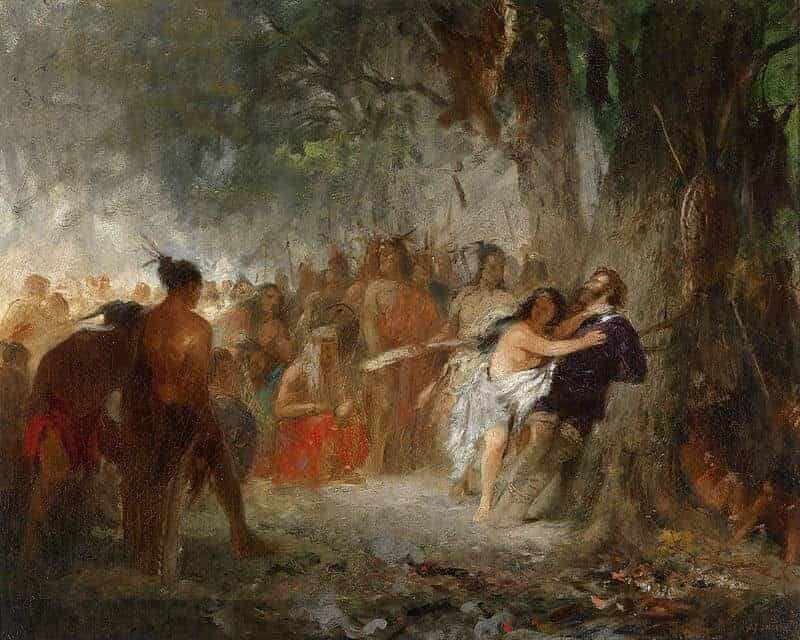When colonists from England landed on the James Peninsula in Virginia in 1607 it was the birth of what became the United States as well as the birth of the British Empire. There was little to mark the day as such an auspicious event. The men going shore were exhausted from the rigors of an Atlantic voyage, hungry, mostly seasick, thirsty, and uncertain of where they were and what they would encounter. They had been living in the ships of the expedition for over four months, eating heavily salted food and drinking foul water and beer.
Before them lay a wilderness that was in the full bloom of spring. The site they selected for settlement was surrounded by brackish water, swamps which bred mosquitoes, and soil unsuitable for crops. The settlers had no way of knowing that their arrival coincided with one of the worst droughts in the history of Virginia, which would continue for the next several years, creating shortages of drinking water, crop failures, and tensions with the natives. Daily life in the colony would be hard, sometimes desperate, and always dangerous. But the colony would survive.

Here are some examples of what was daily life in the colony of Jamestown, the first permanent English settlement in the New World.

Arriving in Virginia
When the first English settlers arrived and explored the region around what would become Jamestown, a pressing mission was the establishment of a fort for protection. The area was populated by approximately 14,000 Algonquian speaking natives, members of the Powhatan Confederacy, led by Chief Powhatan. Powhatan welcomed the English when they arrived in April of 1607, and entertained the idea of moving their settlement inland, where they could be of use manufacturing metal tools and weapons for his people, but the British demurred. Instead they chose a site about 50 miles from Cape Henry for their fortified settlement.
The British built their fort on the site in the early spring of 1607. All of the men participated in building the triangular palisade, and a crop of corn, barley, and peas was planted “on two mountains”. Most of the first group of settlers to arrive were considered to be gentlemen, who could own farms, but due to their status were unable to dig in the dirt. It was beneath their dignity and station. Their servants were completely ignorant of the rigors and requirements of crop husbandry. Throughout the first year in Jamestown, the settlers were dependent on the supplies from the ships and trade with the natives for survival.

